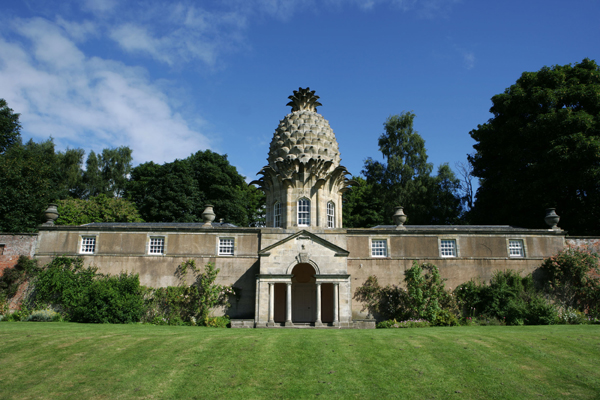Celebrating vernacular buildings
By Project Development Manager, Alastair Dick-Cleland
Landmark is perhaps best known amongst the general public for the particularly ‘weird and wacky’ buildings we’ve rescued over the years. Think of The Pineapple, the Pigsty or Gothic Temple, as examples. But when Sir John Smith founded the Landmark Trust back in May 1965, the very first building that was taken on and opened to Landmarkers was a simple caretaker’s cottage, Church Cottage in Llandygwydd, Ceredigion. The church across the road was the third to have been built on the site; this one didn’t last either, and was sadly demolished in 2000. But happily the caretaker’s cottage lives on since welcoming its first Landmarkers back in 1967.
Our charity has continued to champion simple, humble and vernacular buildings ever since. As Sir John said back in those early days, Landmark was set up to rescue and restore ‘minor but handsome buildings of all kinds, into whose construction went much thought and care, which are part of our history and which contribute greatly to the scene; but whose original use has disappeared and which cannot be preserved from vandals, demolition or decay unless a new use and a source of income can be found for them’. It was the wilful destruction of Thomas Telford’s Junction House on the Ellesmere Canal in the early 1960s that triggered Sir John into founding the Landmark Trust.
 The Pineapple, Dunmore, Scotland
The Pineapple, Dunmore, Scotland
Within our portfolio there are constellations which reveal the changing lives of our forebears and on recently staying in Paxton’s Tower Lodge, also in South Wales in Carmarthenshire, I began thinking about the many humble buildings that Landmark has rescued. Paxton’s Tower Lodge was another very early Landmark acquired in 1966. It too is a simple cottage built to house a caretaker, this time for the impressive Paxton’s Tower. This was built as a memorial to Nelson, and it sits proudly on the hill behind the Lodge with immense views in all directions. Middleton Hall, where William Paxton lived, has long gone, but in its place sparkles the dome of the world’s largest single-span glasshouse, by Foster and Partners, which lies at the heart of the National Botanic Gardens of Wales.
Maesyronnen Chapel is a wonderfully simple and atmospheric house of worship, originally just a barn and still in use since 1689. It is one of Wales’s earliest Dissenting chapels. The Landmark itself, acquired in 1985, is the simple cottage built onto one end of the chapel in the early 18th century for the chapel keeper. It is a delightfully rural spot with the Brecon Beacons on your doorstep, and Hay on Wye for more literary pursuits.
 Maesyronnen Chapel, near Hay-on-Wye, Powys
Maesyronnen Chapel, near Hay-on-Wye, Powys
Several years ago my family’s two-week summer holiday was spent at North Street, Cromford. As our Handbook says, this is another of Landmark’s ’quiet gems’, and we and our two young children had a very happy time, not least exploring and climbing the large rocks that lie just outside the village. No 10 is one of several houses on North Street owned by Landmark, rescued in partnership with the Ancient Monuments Society in 1974. The earliest industrial housing in the world, they are all more or less identical, built as a piece by pioneering mill owner Richard Arkwright to provide decent homes to attract workers for his revolutionary new factory system. The top floor of each house has a surprisingly long run of stone-mullioned, leaded-light windows – a clue that this attic floor was used for framework-knitting.
 North Street, Cromford, Derbyshire
North Street, Cromford, Derbyshire
In the far north of Scotland are the Shore Cottages at Berriedale, in Caithness, and Landmarks that I have yet to visit. This row of fishermen’s cottages is our most northerly property, carefully restored and opened in 2012 as two Landmarks. No 1 is for two people, offering a chance to experience the original dimensions of a fisherman’s cottage, while No 2 can take up to six. The sweep of 200 years of Scottish history lie behind the group of buildings, built in the 1840s as fishing replaced crofting as a livelihood, all part of the economic reorganisation across the Highlands after The Clearances. Accessed via a suspension footbridge, the site has dramatic views out over the North Sea.
Landmark’s pioneering approach and enthusiasm for rescuing precious historic buildings of all kinds, including the humble, remains undimmed. Each Landmark has its own utterly unique particular story. The little buildings highlighted here remind us of the value of the modest as well as the grand. It was as true then as it is now that ‘Be it ever so ‘umble, there’s no place like home’.
 The Shore Cottages, Berriedale near Wick, Caithness
The Shore Cottages, Berriedale near Wick, Caithness
